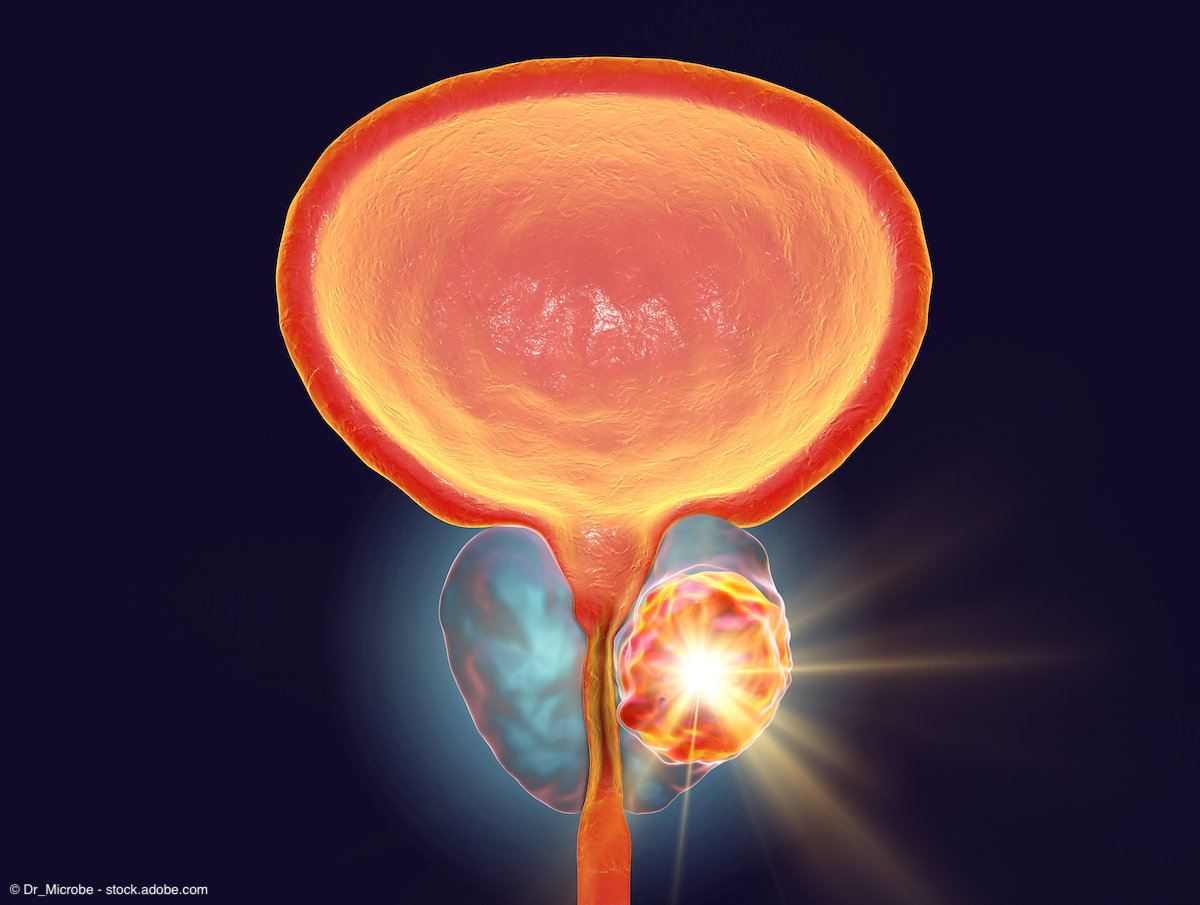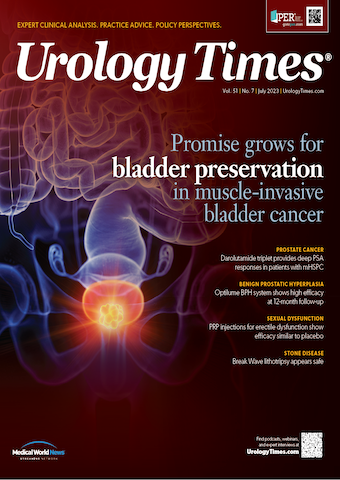Publication
Article
Urology Times Journal
Apalutamide/ADT prolongs PSA PFS in biochemically relapsed prostate cancer
Author(s):
Adding apalutamide (Erleada) to androgen deprivation therapy (ADT), with or without abiraterone acetate plus prednisone, for 1 year significantly prolonged PSA progression-free survival (PFS) in men with biochemically relapsed prostate cancer (BRPC), according to extended follow-up from the phase 3 PRESTO study (NCT03009981) presented at the American Urological Association Annual Meeting.
Lead study author Scott Eggener, MD, noted that follow-up is ongoing to evaluate patient-reported outcomes, time to castration resistance, and metastasis-free survival.

“There was no adverse impact on time to testosterone recovery,” Scott Eggener, MD, vice chair, Section of Urology, and director, High Risk and Advanced Prostate Cancer Clinic, University of Chicago Medicine, said in a presentation of the data. “And the safety profile was consistent with prior studies.”
Further, the addition of abiraterone acetate plus prednisone did not appear to demonstrate a major benefit to intensifying treatment with apalutamide/ADT.
“[Adding abiraterone acetate plus prednisone] does add to toxicity,” Eggener added. “[However,] the study wasn’t designed to test ADT/apalutamide vs ADT/apalutamide plus abiraterone/prednisone.”
After a median follow-up of 26.5 months, ADT plus apalutamide demonstrated superior PSA-PFS, compared with ADT alone (24.5 months [95% CI, 23.3-32.0] vs 21.0 months [95% CI, 20.0-24.0], respectively), reducing the risk for progression or death by 41% (HR, 0.59; 95% CI, 0.42-0.81; P = .0006).
Similarly, after a median follow-up of 26.7 months, ADT plus apalutamide, abiraterone acetate plus prednisone demonstrated improved PSA-PFS, compared with ADT alone (27.6 months [95% CI, 25.4-31.5] vs 21.0 months [95% CI, 20.0-24.0], respectively), reducing the risk for progression or death by 47% (HR, 0.53; 95% CI, 0.38-0.74; P = .00006).
PSA-PFS by PSA doubling time (PSADT) time was favored for both ADT plus apalutamide (HR, 0.58; 95% CI, 0.42-0.81) and ADT plus apalutamide, abiraterone acetate plus prednisone (HR, 0.52; 95% CI, 0.37-0.72), compared with the control arm, in particular with 3 to 9 months PSA doubling time, vs less than 3 months.
When evaluating PSA-PFS among men whose testosterone returned to >50 ng/dL, 202 patients in the ADT plus apalutamide arm, compared with the control arm, had testosterone recovery (HR, 0.57; 95% CI, 0.40-0.81; P = .0009), and 197 patients in the ADT plus apalutamide, abiraterone acetate plus prednisone arm had recovery (HR, 0.59; 95% CI, 0.41-0.85; P = .0018). However, there was no difference between the arms pertaining to the time to testosterone recovery.
Any grade adverse events (AEs) occurred in the control, ADT plus apalutamide, and ADT plus apalutamide, abiraterone acetate plus prednisone arms at rates of 90.6%, 90.8%, and 96.3%, respectively. Grade 3/4 AEs occurred at rates of 18.8%, 25.2%, and 37.9%, respectively. Treatment was discontinued in 1.8% of the ADT plus apalutamide, and 3.1% of the ADT plus apalutamide, abiraterone acetate plus prednisone arm.
The most common grade 2 or higher AEs were hypertension and rash.
Eggener acknowledged that the study was limited by the primary end point being PSA-based rather than metastasis-free survival, and the fact that molecular imaging was not required at screening.
PRESTO study
“We all know that [biochemical recurrence] after prostatectomy with a low PSA doubling time is a harbinger and risk factor [for the development of distant metastases and prostate cancer mortality],” Eggener explained, adding that intermittent ADT is the standard approach for this population.
Previous phase 2 trials of abiraterone acetate plus prednisone and apalutamide to treat BCR demonstrated improved PFS without hindering quality of life. Therefore, the investigators hypothesized that the intensification of ADT could lead to more durable PSA suppression and enable longer treatment-free intervals.
In the randomized, open-label, phase 3 PRESTO trial, patients with BRPC following radical prostatectomy and a short PSADT were randomized 1:1:1 to receive either a finite 52-week treatment course with ADT; ADT plus apalutamide; or ADT plus apalutamide and abiraterone acetate plus prednisone.
Biochemical progression-free survival (bPFS; serum PSA > 0.2 ng/mL following treatment) served as the primary end point. Secondary end points included safety, patient-reported quality of life (QOL), time to testosterone recovery (TTTR), metastasis-free survival (MFS), and time to castration resistance (TTCR).
At baseline, median PSA was 1.77 ng/ML in the overall population, while PSA doubling time at less than 3 months occurred in 130 patients and 3 to 9 months in 373 patients. Overall, 42.35% of patients previously received prior ADT.
Eggener noted that follow-up is ongoing to evaluate patient-reported outcomes, time to castration resistance, and metastasis-free survival.
Reference
1. Aggarwal R, Eggener S, Heller G, et al. Updated Progression-Free Survival from PRESTO: a Phase 3 Randomized Study of Androgen Annihilation for High-Risk Biochemically Relapsed Prostate Cancer (AFT-19). J Urol. 2023;209(4):e1191. doi:10.1097/JU.0000000000003361.11.

Newsletter
Stay current with the latest urology news and practice-changing insights — sign up now for the essential updates every urologist needs.


























